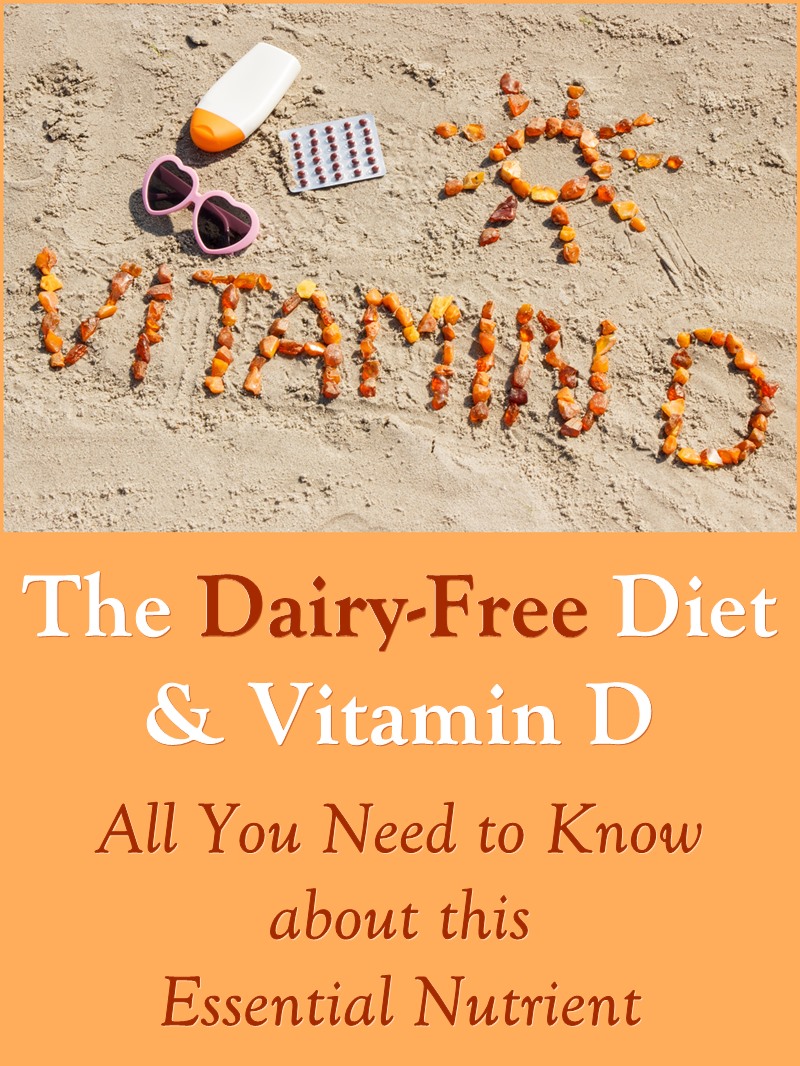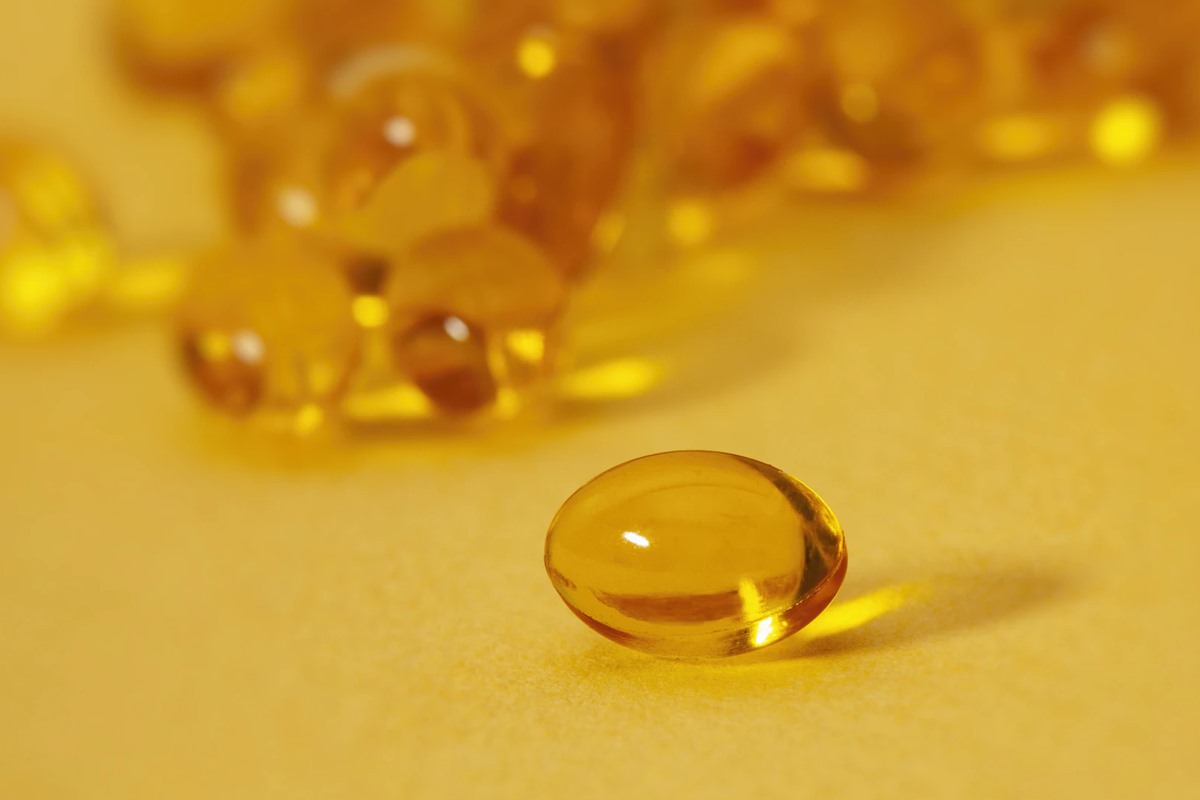One of the most common concerns with a dairy-free diet is calcium. But calcium consumption isn’t a magic pill for bone health (spoiler: milk drinkers get osteoporosis too). In fact, I’ve met several medical professionals who argue that vitamin D plays a much more essential role within our bodies.
Most people don’t realize milk isn’t naturally a good source of vitamin D. Whole milk, even without processing, only contains 0.34 to 0.84 IU of vitamin D per gram of fat. That’s just 2.7 to 6.7 IU in a full cup of whole milk. Low fat milk has even less, since vitamin D is removed with the fat. To put this in perspective, the Recommended Dietary Allowance (RDA) for most people is 600 IU per day. So a full glass of unfortified milk provides 1% or less of the typical RDA for vitamin D.
But most milk processors opt to fortify milk with vitamin D3. It’s become somewhat of a standard practice, but it is still completely optional. So don’t be surprised if you see a carton of dairy milk with no vitamin D listed in the ingredients or nutrition facts.
And for the most part, fortified vitamin D3 is fortified vitamin D3. It really doesn’t matter if you get it from dairy milk or a dairy-free milk beverage. You just need to get some vitamin D. Now let’s discuss how.

Sunlight and Vitamin D
The best source of vitamin D is your own skin, with a little help from the sun. UVB rays from the sun interact with a chemical in your skin to turn it into vitamin D3. The newly created D3 is then carried to your liver and kidneys, where it transforms into active vitamin D.
But here is where the controversy picks up. We’ve long been told to stay out of the midday sun, but this is when UVB rays are strongest. According to research cited in Vitamin D: The Sunshine Vitamin by Dr. Zoltan Rona, the sun’s rays are actually safest from 10am to 2pm when the “good” rays (UVB) are strongest. UVA rays are strongest and more hazardous outside of these hours.
UVB therapy is also a known treatment for eczema. And I can vouch from personal experience, it works extremely well.
But many sources say UVB rays contribute more to sunburns, and should be avoided or heavily limited, for skin cancer prevention.
No matter which side you take, vitamin D levels have been dropping over the years, and many medical professionals attribute it to reduced sun exposure. People spend more time indoors than ever, and sunscreen use (which blocks the ability to make vitamin D) is at an all-time high.
Not to mention, the darker your skin, the more sunlight you need. Melanin, the pigment in our skin, inhibits the production of vitamin D. People with very fair skin might need just 15 minutes of daily sunlight to create enough vitamin D. But people with very dark skin could require several hours of sunlight a day.
Fortunately, if you are concerned about too much sunlight exposure, your body isn’t properly creating vitamin D, or it’s the dead of winter, there are other options.
Dairy-Free Food Sources of Vitamin D
As mentioned, natural dairy isn’t a good source of vitamin D. But because many people rely on fortified milk to meet their vitamin D requirements, it’s important to look elsewhere if you switch to a dairy-free diet.
Natural Sources of Vitamin D3
Vitamin D3 is found most abundantly in fatty fish, and a little bit in egg yolks. Here is a quick chart detailing the amount of vitamin D naturally found in different types of fish and in eggs.
| Food | Serving Size | Vitamin D (IU) |
| Sockeye Salmon, canned | 3 ounces | 716 |
| Farmed Rainbow Trout, cooked | 3 ounces | 648 |
| Swordfish, cooked | 3 ounces | 564 |
| Pink Salmon, canned | 3 ounces | 492 |
| Cod Live Oil | 1 teaspoon | 452 |
| Sockey or Pink Salmon, cooked | 3 ounces | 444 |
| Sturgeon, cooked | 3 ounces | 440 |
| Whitefish, smoked | 3 ounces | 436 |
| Pacific and Jack Mackerel, cooked | 3 ounces | 388 |
| Wild Coho Salmon, cooked | 3 ounces | 384 |
| Light Tuna, canned in oil, drained | 3 ounces | 228 |
| Halibut, cooked | 3 ounces | 196 |
| Atlantic Herring, cooked | 3 ounces | 184 |
| Sardines, canned in oil, drained | 3 ounces | 164 |
| Pacific Rockfish, cooked | 3 ounces | 156 |
| Tilapia, cooked | 3 ounces | 124 |
| Flounder and Sole, cooked | 3 ounces | 120 |
| Egg Yolk | 1 large | 44 |
Mushrooms and Vitamin D2
Mushrooms naturally contain some vitamin D2. Raw morel mushrooms contain about 68 IU in about ½ cup, while Chanterelle mushrooms have around 56 IU. Most other mushrooms have similar amounts. But some mushroom producers grow mushrooms with exposure to UV light, which can increase their vitamin D2 to over 300 IU per ½ cup. I haven’t seen the latter in my local stores, but they are available.
Foods Fortified with Vitamin D
Dairy alternatives are the most obvious sources of vitamin D fortification. Most, but not all, brands of dairy-free milk beverage, from hemp milk to almond milk, are fortified with calcium and vitamin D. The same goes for dairy-free yogurts, protein shakes, and other functional replacements. But these days, you can even find vitamin D added to cereals and orange juice. Check the ingredients and nutrition statement – you might be surprised by all of the foods you’re eating with vitamin D.
Do You Need a Vitamin D Supplement?
If you aren’t converting enough vitamin D from sunlight, and don’t get enough via diet (either natural or fortified), then your doctor might recommend a supplement. Some people require supplements that are much higher than the RDA to get their vitamin D levels in range. That’s why it’s essential to consult a doctor and have your vitamin D levels measured before you embark on vitamin D supplements.
There are many brands of supplements, and most are dairy-free. But if you’re following a strict vegan diet, you’ll need to be more selective.
Vitamin D2 vs Vitamin D3 – Should You Be Picky?
To put it simply, vitamin D2 naturally comes from plants and vitamin D3 naturally comes from animals. As humans (mammals) we produce vitamin D3. The same goes for fish and other animals. You can buy supplements made with vitamin D2 or vitamin D3. Both are readily available.
Some studies have shown that vitamin D2 and vitamin D3 have equal capabilities, at least in initial absorption. But many researchers argue that vitamin D3 is more effective than vitamin D2 at raising blood levels of vitamin D.
To address this concern, food companies began harvesting vitamin D3 from lichens. Lichens are composite organisms comprised of a fungus living in a symbiotic relationship with an alga. They’re not technically plants, but they’re also non-animal. Consequently, vitamin D3 from lichens has been adopted as an acceptable form of vitamin D3 to vegans. This is why you might see vitamin D3 in products and supplements that are labeled or even certified as vegan.
Do You Need to Take Vitamin D with Calcium?
Vitamin D has many roles in our body, from reducing inflammation and modulating our immune responses to promoting calcium absorption. But contrary to popular belief, you don’t need to take vitamin D at the same time as calcium.
Vitamin D is fat soluble, so it’s stored in our fat tissue. Unlike water soluble vitamins, like B and C vitamins, fat-soluble vitamins aren’t readily excreted. Instead, your body is able to mobilize them from your fat when needed. So it doesn’t matter if you consumed vitamin D today, or even yesterday. What matters is that your body has the reserves it needs to absorb the calcium you just consumed and perform other functions.
This is also why many doctors recommend regular testing of vitamin D levels. While many of us fight to keep our levels up, some people end up with levels of vitamin D that are too high when they supplement. The latter can be just as dangerous as the former. So use caution if you chose to supplement with vitamin D, and do so under the guidance of your physician.
This post is for informational purposes only, and should not be construed as medical advice.
References
- Vitamin Fortification of Fluid Milk, Journal of Food Science
- Vitamin D, Mayo Clinic
- Eczema: Light therapy and oral medications, Institute for Quality and Efficiency in Health Care
- Vitamin D and your health: Breaking old rules, raising new hopes, Harvard Health
- Calcium and Vitamin D, National Osteoporosis Foundation
- Vitamin D Fact Sheet, The National Institute of Health
- Vitamin D2 vs Vitamin D3, What’s the Difference?, Healthline
- What are Lichens?, Live Science
- USDA National Nutrient Database for Standard Reference, Release 27, U.S Department of Agriculture

